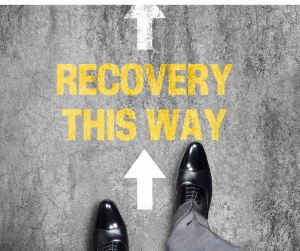
In the world of rehabilitative and performance-based chiropractic care, recovery is no longer about doing less—it’s about doing the right things. While hands-on treatments like chiropractic adjustments, cupping, and dry needling lay the foundation for healing, it’s what you do between sessions that often determines how well those benefits stick. This is where active recovery becomes a game-changer.
What Is Active Recovery?
Active recovery refers to low-intensity movement practices that support the body’s natural healing processes without imposing additional stress. Instead of lying on the couch post-treatment, active recovery encourages gentle movement to:
Promote circulation and nutrient delivery
Aid lymphatic drainage and inflammation reduction
Enhance tissue elasticity and joint mobility
Support nervous system regulation
Examples include walking, mobility drills, breathwork, stretching, light resistance work, swimming, or even yoga.
Why Movement Matters After Chiropractic Treatment
When your body receives an adjustment or soft tissue therapy (like cupping or dry needling), it undergoes a reset of sorts. Muscles release, joints realign, and the nervous system recalibrates. However, without reinforcing these changes through movement, old patterns may quickly return.
Here’s how active recovery helps sustain your results:
Reinforces new movement patterns: Movement integrates the changes made during your session into your daily biomechanics.
Prevents re-tightening of tissues: Gentle mobility prevents fascia and muscle from returning to their restricted state.
Improves joint lubrication: Motion is lotion. Active recovery keeps synovial fluid moving and reduces stiffness.
Calms the nervous system: Light movement helps keep the body in a parasympathetic, healing state post-treatment.
Targeted Mobility: Focus on What Gets Stuck
Chiropractic care often highlights areas of restriction or imbalance. Use your recovery days to work on these key zones:
🔹 Thoracic Spine (Mid-Back)
Why it matters: A mobile thoracic spine supports shoulder and neck function.
Try: Cat-Cow stretch, thoracic spine foam rolling, or open book rotations.
🔹 Hips
Why it matters: Tight hips often contribute to back pain and poor squatting patterns.
Try: 90/90 hip switches, glute bridges, deep lunge stretches.
🔹 Ankles and Feet
Why it matters: Ankle mobility impacts gait, squat depth, and knee health.
Try: Calf stretches, ankle circles, banded dorsiflexion drills.
🔹 Neck and Shoulders
Why it matters: Postural strain and tech neck wreak havoc here.
Try: Chin tucks, wall angels, scapular slides.
How to Structure an Active Recovery Session
An effective session doesn’t need to be long. Aim for 15–30 minutes, 1–3 times per week, especially after more intensive bodywork or heavy training. A sample structure:
5 minutes: Dynamic warm-up (e.g., walking, arm swings, bodyweight squats)
10–15 minutes: Mobility drills targeting restricted areas
5 minutes: Breathwork or gentle stretching to downregulate the nervous system
When to Choose Active Recovery vs. Full Rest
Sometimes, movement is exactly what your body needs—other times, full rest is appropriate. Here’s how to know the difference:
| Choose Active Recovery If… | Opt for Full Rest If… |
|---|---|
| You feel sore or stiff, but not injured | You’re extremely fatigued or ill |
| You had a deep tissue or needling session | You’re sleep-deprived or overtrained |
| You want to maintain mobility and energy | You feel pain beyond general soreness |
Make It a Habit
The key to getting the most from your chiropractic sessions is consistency—not just in showing up, but in how you treat your body between visits. Active recovery bridges the gap between treatment and training, helping you:
Move better
Feel more balanced
Recover faster
Stay pain-free longer
Ready to build an active recovery routine tailored to your body?
Ask your chiropractor or movement specialist to help you identify your personal mobility blind spots and create a plan you can follow at home or in the gym.
Because true recovery isn’t passive—it’s purposeful.

